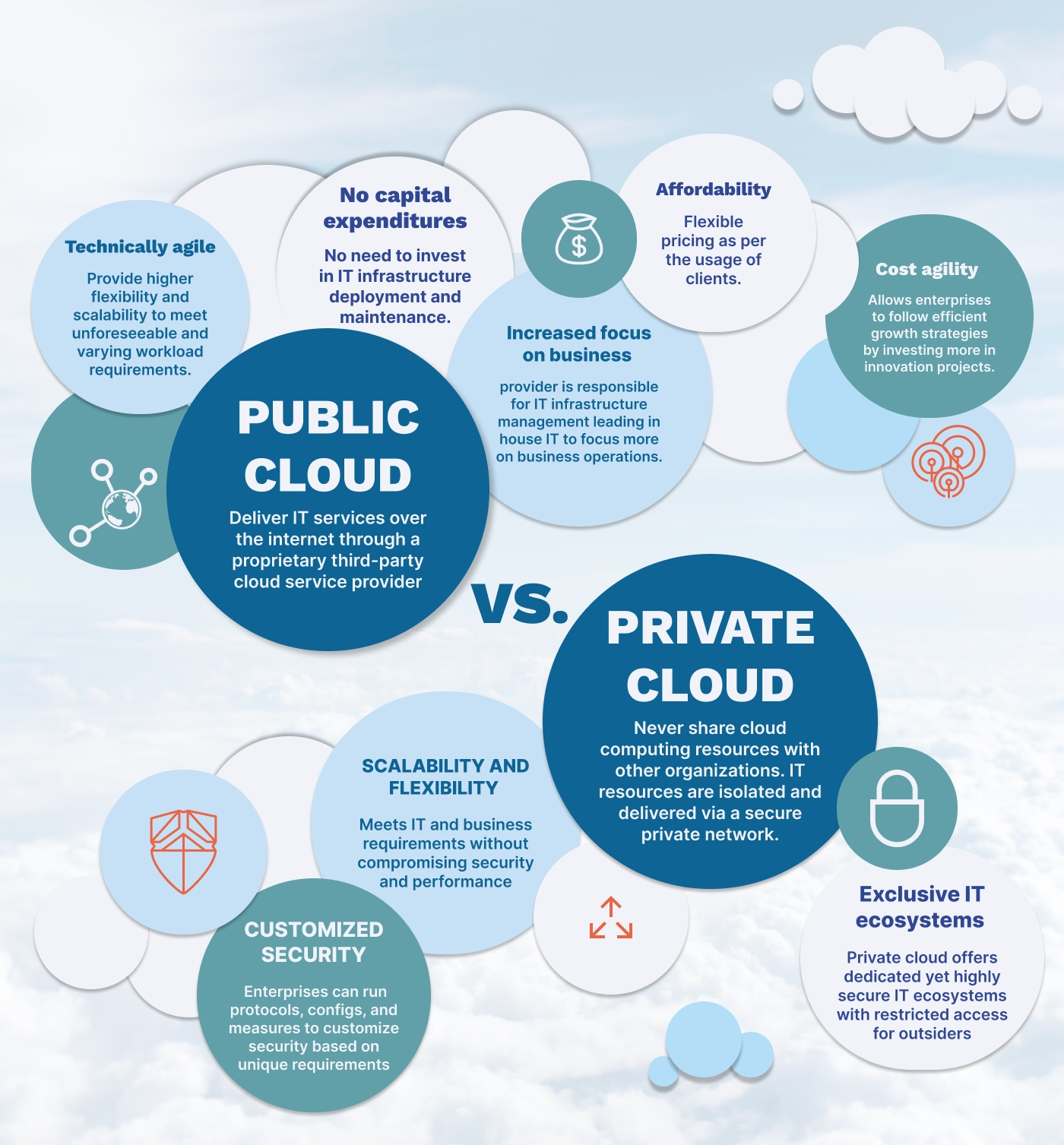Cloud computing facilitates storing or accessing applications, programs, and data over the internet instead of directly accessing them on your computer hard drive. The cloud icon often used to picture the Internet in flowcharts and diagrams inspired the term cloud computing.
Most of us would have already used several cloud computing services in our personal or professional lives. For example, document sharing services like Google Docs, Microsoft 365, and Dropbox; social networking sites like Facebook and Twitter; telecommunications applications like Skype; online streaming services like Netflix; Machine Learning (ML), Big Data analysis and Internet of Things (IoT) are all popular cloud computing services.
The worldwide cloud computing market is valued at roughly $369 billion in 2021 and is speculated to increase in size at a Compound Annual Growth Rate (CAGR) of nearly 16% from 2022 to 2030.
There are several types of cloud services. Some of the most popular ones are Infrastructure as a Service (IaaS), Software as a Service (SaaS), and Platform as a Service (PaaS). These cloud computing services can be set up in public or private cloud computing ecosystems.
The Public Cloud
Public clouds – the most popular cloud model – deliver Information Technology (IT) services like storage and servers over the internet by a proprietary third-party cloud service provider. Every hardware, software, and other supporting infrastructure in a public cloud is owned and operated by the cloud services provider. The user can access these services by managing an account using a web browser.
The unique features of public cloud services include:
- Higher levels of scalability and elasticity
- A lower subscription fee based on tiered pricing
Public cloud computing services are offered as free, freemium, or premium models, in which you are charged based on the IT resources you use. The public cloud computing services may range from standard IT services like email, applications, and storage to the enterprise-grade Operating System (OS) platform or IT infrastructure used for software development and testing.
The third-party cloud computing services provider is responsible for developing, operating, and maintaining the pool of IT resources shared between multiple users from across the network.
Public Cloud Use Cases
The public cloud computing services are best suited for the following business ecosystems.
- An enterprise with predictable IT needs like communication or collaboration services for a specific number of users.
- An enterprise in need of applications and services necessary to perform specific IT and business operations
- A business that requires additional IT resources to meet varying demands and requirements
- To meet software development and testing requirements
Benefits of Public Cloud
- No capital expenditures (CapEx): An enterprise doesn’t need to invest in IT infrastructure deployment and maintenance.
- Technically agile: It provides higher flexibility and scalability to meet unforeseeable yet varying workload requirements.
- Increased focus on business: The cloud services provider is responsible for IT infrastructure management. So, the complexities and requirements of in-house IT expertise are minimized, bringing more focus on business operations.
- Affordability: Flexible pricing as per the usage of clients.
- Cost agility: It allows enterprises to follow efficient growth strategies by investing more in innovation projects.
Pitfalls of Public Cloud
- Lesser control over cost: In higher usage, the Total Cost of Ownership (TCO) can also increase accordingly.
- Lower cybersecurity levels: Public cloud is the least secure cloud computing service, and it is not suitable for information-sensitive and mission-critical IT operations.
- Lower technical control: Lower visibility and control of the public cloud IT infrastructure may not meet your compliance needs.
The Private Cloud
The private cloud is a dedicated yet ‘private’ cloud computing service. An enterprise that uses a private cloud never shares its cloud computing resources with any other organization. Instead, the IT resources are isolated and delivered via a secure private network. The private cloud can be customized as per a business organization’s specific business and security needs.
Private Cloud Use Cases
The private cloud is suitable for:
- Government agencies and highly regulated industries
- An enterprise that uses sensitive data
- Businesses that require solid control and security over their workloads and IT infrastructure
- Enterprises that need advanced data center technologies for efficient and cost-effective business operations.
Benefits of Private Cloud
- Exclusive IT ecosystems: Private cloud offers dedicated yet highly secure IT ecosystems with restricted access for outsiders.
- Customized cybersecurity: Enterprises can run protocols, configurations, and measures to customize security based on unique workload requirements.
- Scalability and flexibility: Higher scalability, flexibility, and efficiency to meet unforeseeable requirements of ever-changing IT and business environments without compromising performance and security.
Pitfalls of Private Cloud
- Higher Cost: The private cloud is expensive compared to public cloud services.
- Immobility: Due to higher security measures, users with mobile devices have limited access to private cloud services.
- Lower Scalability: The private cloud infrastructure may not offer higher scalability if the cloud data center is based on on-premise IT resources.
Recent Posts
Let's Talk
Our GoDgtl team is ready to help you!
We appreciate your interest in GoDgtl. Please select which team of experts you wish to engage:
